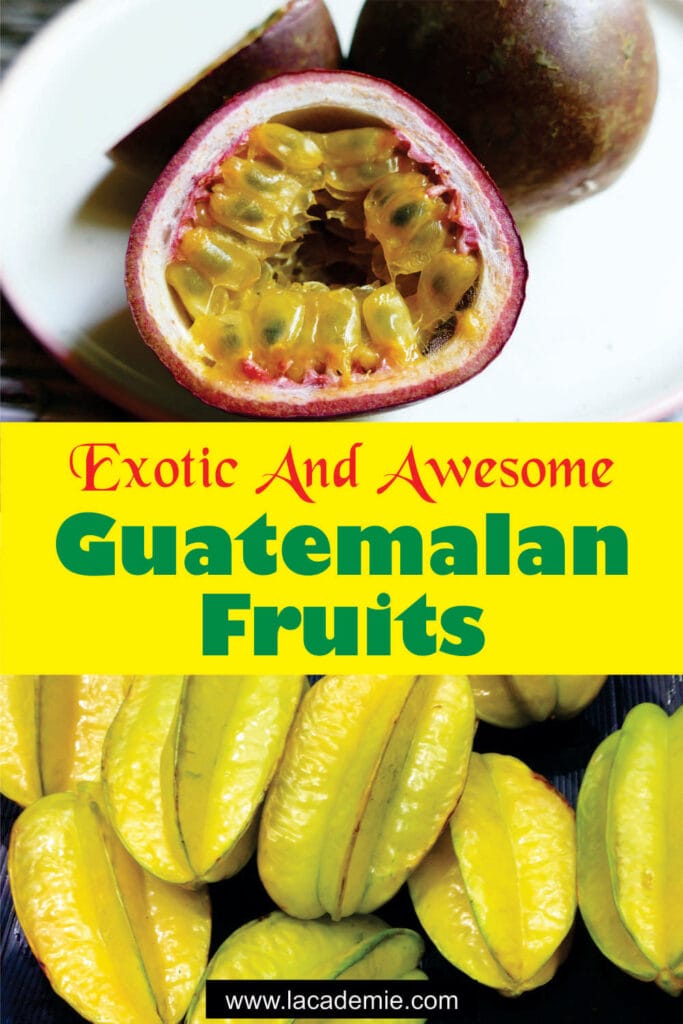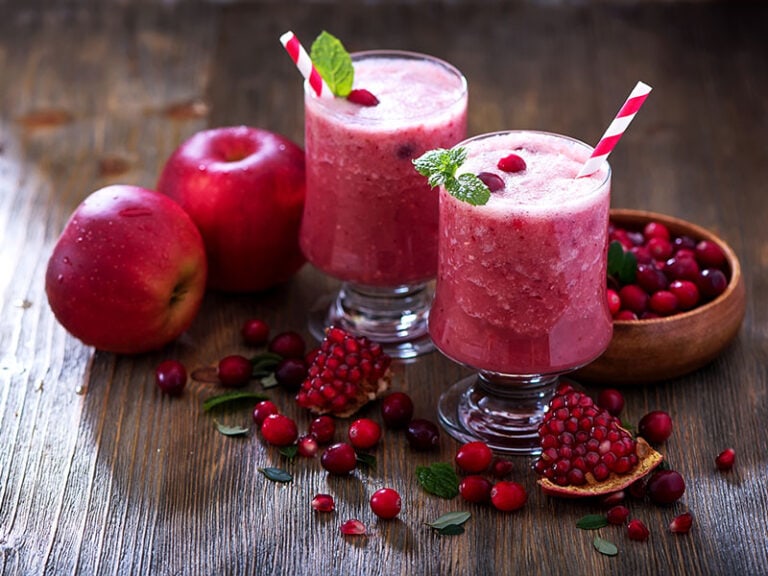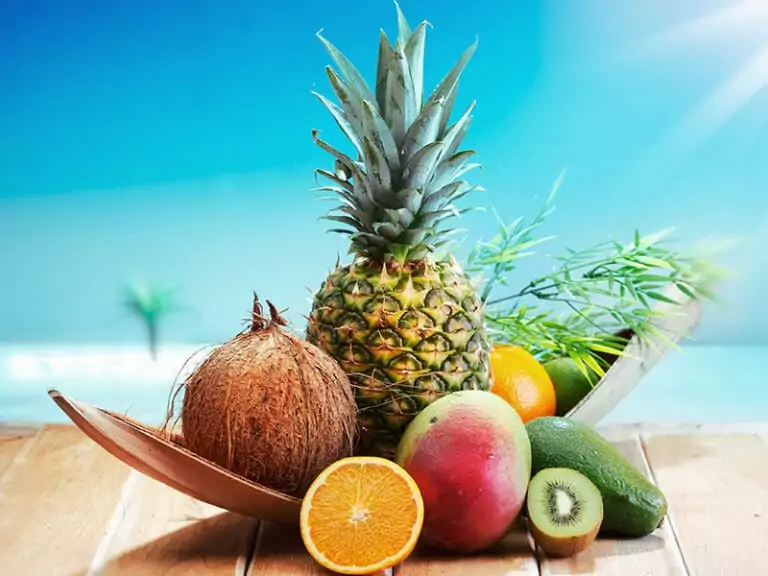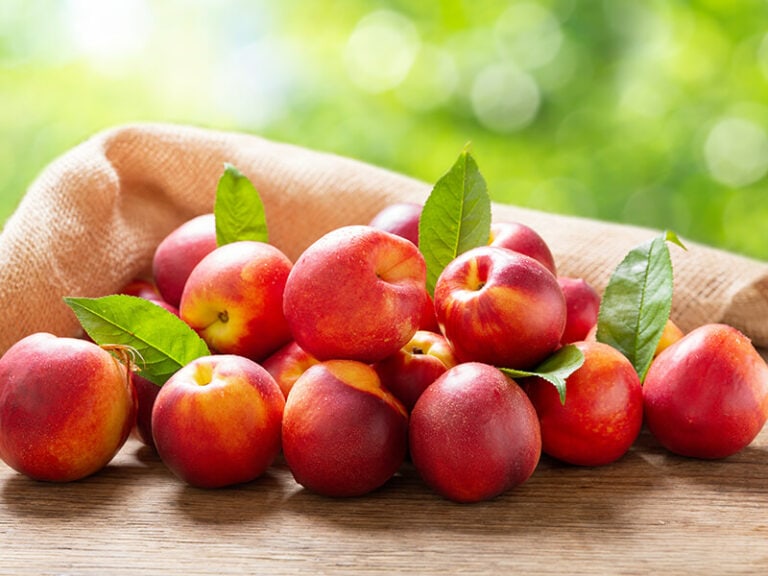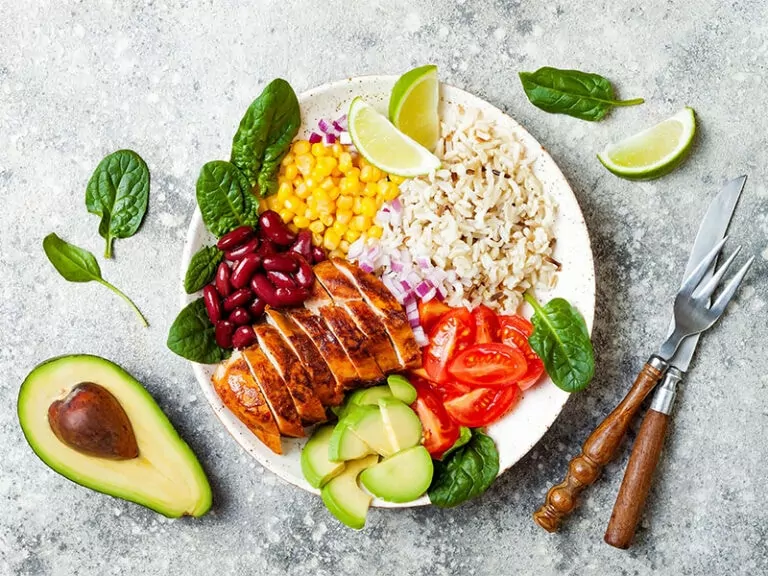It is straightforward to fall in love with the superb taste of Guatemalan fruits. After enjoying them on my last trip, I still want to return to this country to eat these fruits one more time. Therefore, if you can visit this country, do not miss chances to try them out.
The list of these famous fruits will bring unique experiences in the journey to explore the characteristics of Guatemala. To not miss any essential information, you should focus your mind on reading this excellent article.
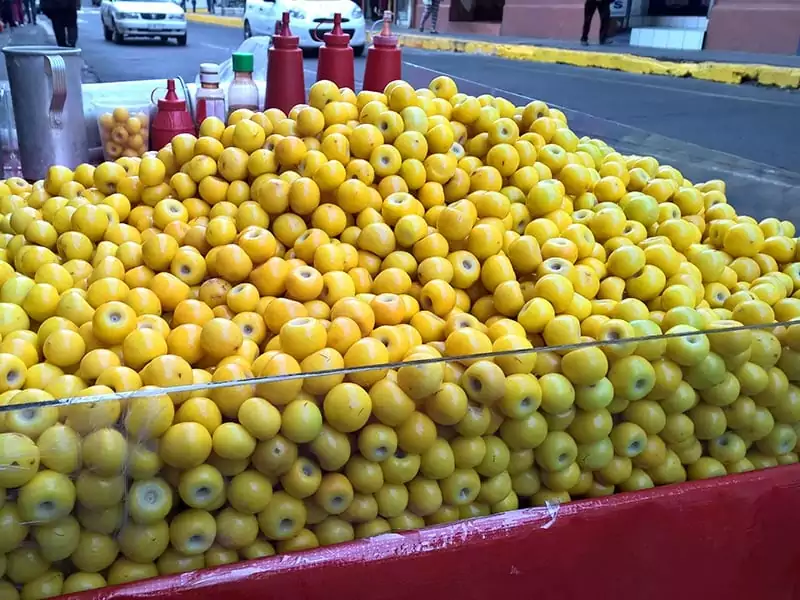
List Of Excellent Guatemalan Fruits Containing Many Seeds
Let’s start the Guatemalan fruits party with the outstanding fruits that contain many seeds. They can be edible or inedible. To know more about them, please read the information below.
1. Star Fruit – Carambola
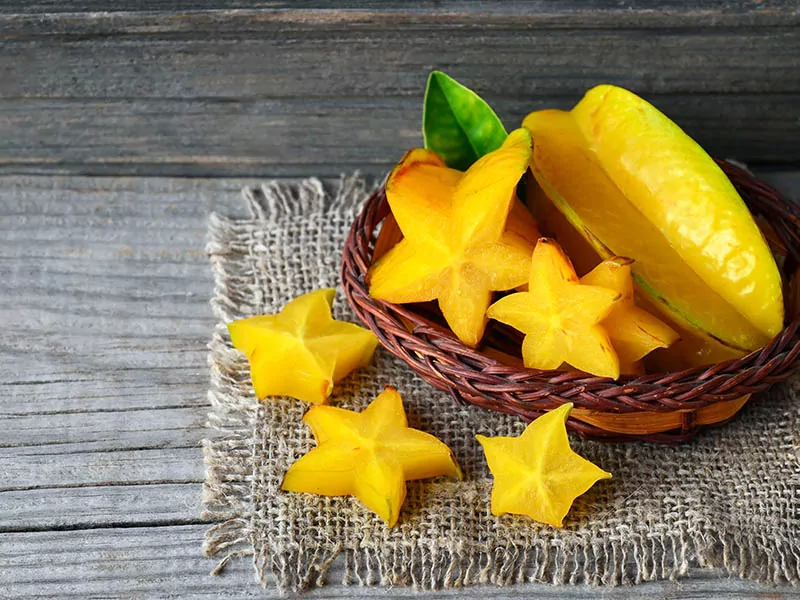
Star fruit or carambola is the widespread ingredient in many yummy Guatemalan foods. This fruit has a unique look with 5 to 6 ridges running along its sides. You will get a star-like shape when cutting this fruit.
The fruit is native to Southeast Asia. Gradually, it is cultivated widely in many tropical regions, such as South Asia, the Caribbean, and Brazil.
It is hard to confuse star fruit with any other amazing sorts of fruit in Guatemala because it has a glossy appearance with a waxy and orange-yellow skin. The juiciness of yellow flesh will make you flutter instantly.
Besides, the crunchy texture of carambola is suitable to make delicious salads. When tasting this fruit, you feel the sweet and sour taste that leads to the balance in the star fruit’s flavor. If you want to purchase star fruit in Guatemala, you just need to go to the local markets.
If you love sour fruit, you can consume the unripe star fruit directly. Meanwhile, the mature version will be appealing in the sweet taste and the sour undertone. Its taste resembles the mixture of apples, grape, pear, and citrus fruit.
Furthermore, the star fruit juice is one of the excellent desserts in Guatemalan cuisine. You can feel its taste in chutney, cakes, and cocktails at the restaurants in Guatemala.
This fruit is the source of caramboxin, which is a neurotoxin with the same structure as phenylalanine. In particular, this element is not good for those who have kidney problems.
Nutrients: Plenty of vitamin C, magnesium, potassium, and phosphorus.
Season: Its season lasts from April to June and from October to December in Guatemala.
How to eat: Because you can consume its skin, you just need to rinse it with water before eating the whole fruit.
Learn how to cut and consume star fruit properly.
2. Soursop – Guanabana
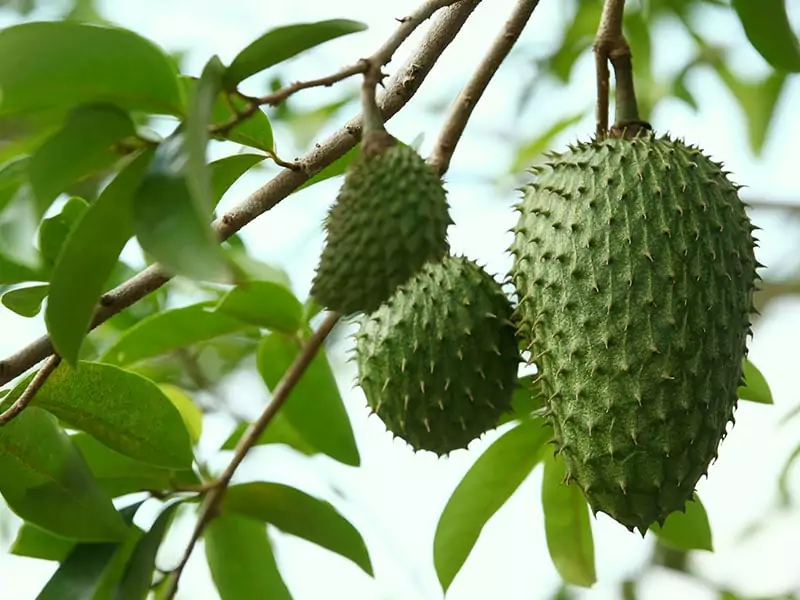
Until now, I cannot forget the feeling when trying soursop in Guatemala. It is also known as guanabana in American countries. This excellent fruit has its origin in the Caribbean and Americas. Soursop is a part of the Annonaceae family.
You will fall in love with the creamy texture and the enchanting sweetness of this fruit. In addition, a hint of sour citrus taste will tickle your palate immediately. Its taste is a perfect mixture of apple, strawberries, and citrus fruit.
This healthy fruit looks distinctive in its oval shape and deep green rind. On the surface of the skin, you will catch many small pimples. The pineapple-like fragrance of this fruit will make your dessert recipes more fascinating.
Guatemala, Peru, Mexico, and Brazil are the leading suppliers of soursop worldwide. Many people say that this fruit can treat cancer, but this information still does not verify. Besides eating raw, you can prepare smoothies, shakes, juices, ice cream, or sorbets.
Nutrients: A source of calories, carbs, vitamin C, choline, calcium, and potassium.
Season: This fantastic fruit is often available from mid summer to mid winter.
How to eat: The standard method to eat soursop is to divide it into 2 sections and consume the flesh. In particular, do not forget to throw its seeds.
3. Star Apple – Caimito
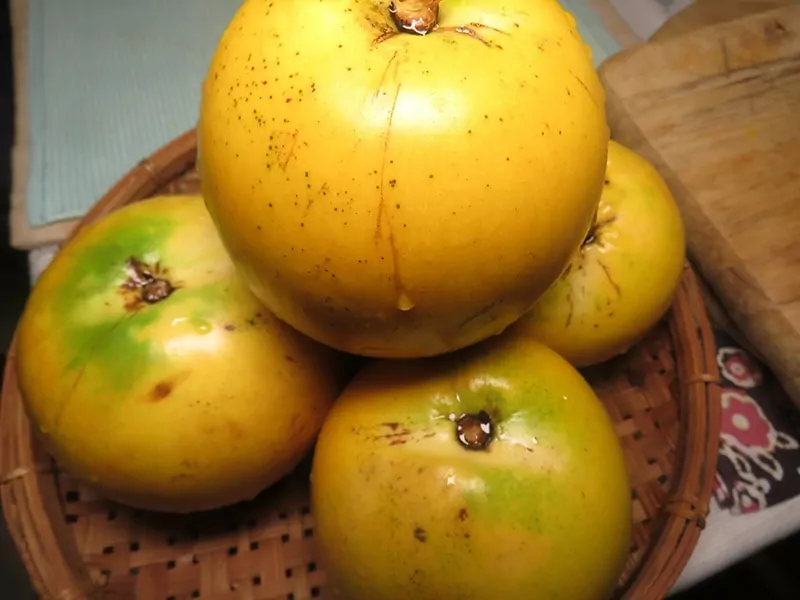
Caimito is a popular tropical fruit in many regions globally. Besides Guatemala, it is also a well-known Jamaican fruit. When you go to the local markets in Guatemala, you can see many stores and vendors selling this excellent fruit.
The Isthmus of Panama is the homeland of caimito. Gradually, this fruit is planted abundantly in the West Indies, Greater Antilles, and other tropics. Its name comes from the words “cab”, “im”, and “vitis”, which mean “juice”, “breast”, and “sap” in Mayan.
You can find this fruit with other names, such as star apple, tar apple, or milk fruit. The skin shade might be purple or green, depending on their variety. Primarily, you will come across some markings on its skin.
You can choose the types with greenish-white or yellow flesh to consume. A star pattern will appear on its flesh when you cut the fruit into 2 halves. This fruit is a healthy choice to add to foods with many nutrients.
You can enjoy its taste in many excellent Guatemalan drinks like tea and coffee. And these drinks can treat rheumatism and diabetes. In particular, you will immerse yourself in the sweet taste of this fruit when you eat it raw.
Nutrients: A source of fiber, vitamin C, B5, folate, copper, magnesium, and potassium.
Season: Its season lasts from winter to summer in Guatemala.
How to eat: To enjoy the outstanding taste of this fruit, you will chop it in half and use a spoon to eat its flesh. Remember to get rid of the seeds.
4. Passion Fruit – Granadilla Comun
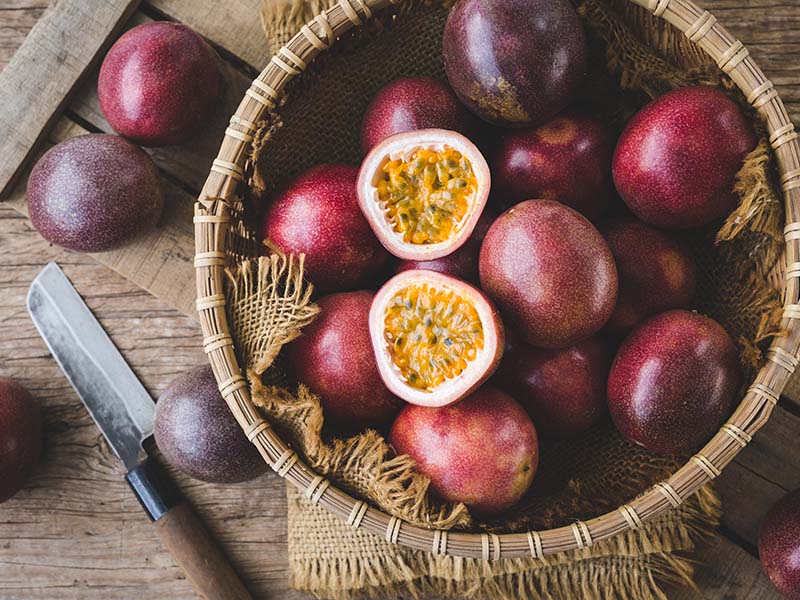
Passion fruit is a well-known treat across the Americas and many tropical regions globally. People commonly call them granadillas in Guatemala, Colombia, Mexico, and South American countries.
This incredible and succulent fruit derives from South America and is associated with the cuisine and culture of Guatemala and many nations. Its rind shade ranges from red to yellow, purple, or green and includes many small markings on the surface.
The prominent feature of its skin is its hard and slippery texture. The sweet and juicy pulp covers numerous tiny seeds. You can remind me of the consistency of jelly when you try the flesh of passion fruit.
This fruit is diverse in variety, with numerous species of passion fruit that have been found around the world. You will like the slightly sour taste of passion fruit. In Guatemala, people often get its pulp to make juice or add to cakes and puddings.
Nutrients: Calories, fiber, vitamin C, A, iron, and potassium.
Season: Its season begins in April and ends in May in Guatemala.
How to eat: People often use the juicy flesh of this fruit to add to dishes.
Let’s give passion fruit a shot to understand its authentic flavor.
5. Ice Cream Bean – Paternas
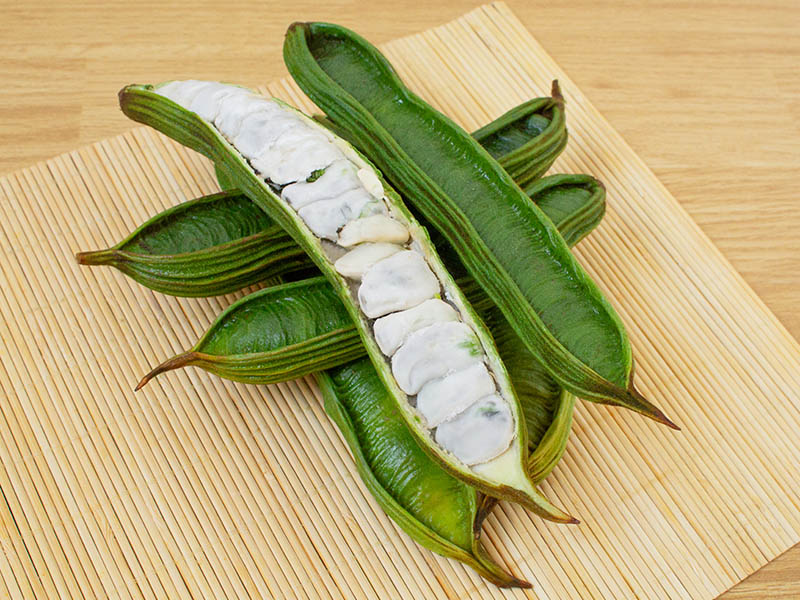
In many English-speaking countries, it is known as the ice cream bean. When you look at this fruit for the first time, it is hard to think that it is a fruit because its appearance and structure resemble a bean pod.
Actually, it is an authentic fruit. There are 300 different types of paternas, and they grow commonly in the Amazon forest, the Caribbean, and Central America. When coming to Guatemala, you can see this fruit in the backyard of many houses.
Inga is another name for this fruit, and this name has its origin in the word “in-ga”, which means “soaked” in Tupi. Also, it is a fantastic Ecuadorian fruit, and it is called “guaba de bejuco” in this country.
There are many seeds inside the green and wrinkled pod. The white, sweet, and creamy pulp will cover the glossy and black seeds. You will add a high amount of iron when consuming this fruit raw.
Nutrients: Plenty of calories, protein, carbs, fiber, vitamin C, and potassium.
Season: This fruit is available between June and October.
How to eat: Break the pod of this fruit with your hand. Eat the pulp around the seeds of this fruit.
6. Sweetsop – Cherimoya
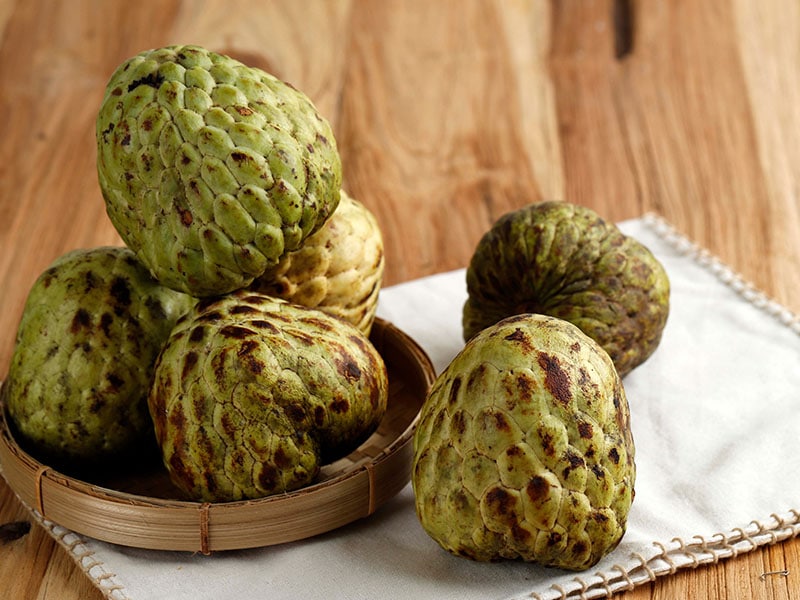
Sweetsop or cherimoya is a local Peruvian fruit because this fantastic fruit is derived from Ecuador and Peru. Nowadays, its agriculture occurs widely in the Andes region, Central America, and many tropical areas worldwide.
Because of its excellent creamy texture, it gets another name, “custard apple”. Sweetsop has a heart-shape appearance with pale green, deep pink, or blue green hues. You will see many knobby warts on the surface of the rind.
This fruit is a convergence of numerous small segments. Each creamy and white segment will contain a black seed. Sweetsop is described as “the most delicious fruit for men”. Its flavor is the same as the taste of guanabana, but it will be sweeter.
The texture will become tender when mature, so you can break the fruit easily with your hand to enjoy the yummy pulp. This mouthwatering fruit is common in smoothies, shakes, and juices.
Nutrients: Plenty of calories, carbs, vitamin C, potassium, phosphorus, and calcium.
Season: It is usually ripe from late summer to early fall.
How to eat: Because it is soft, you can separate this fruit with your hand. Please remove the seeds while eating.
7. Dragon Fruit – Pitaya
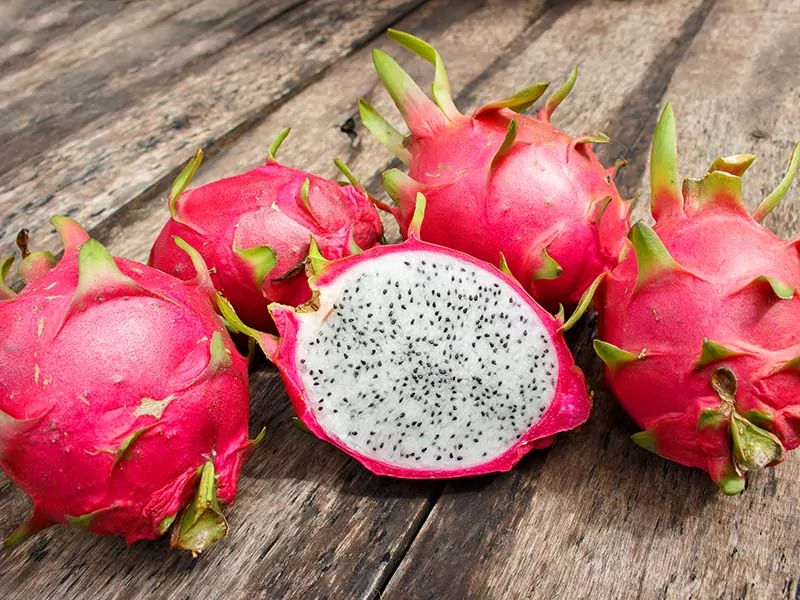
You can call this fruit pitaya or dragon fruit. It is one of the parts of the Cactaceae family. This delicious and nutritious fruit is native to the Americas, and it is widespread in Australia, Southeast Asia, and other tropical regions.
Also, it is considered the most famous Filipino fruit. To purchase this fruit, you just need to go to the local markets in Guatemala. Its name is taken from its unique appearance. When looking at the fruit, the rind can remind of a dragon’s head.
There are many scaly spikes around the leathery peel of pitaya. You can try 3 different types of dragon fruit with the divergence in skin and flesh color. Pitaya Blanca will have white meat and pink peel.
Meanwhile, the pitaya Amarilla looks beautiful in the yellow rind and white flesh. If you want to eat red meat, you can choose pitaya Roja with red skin. Plus, the sweetness level of red flesh will be higher than the white version.
You can enjoy the mild sweet taste of pitaya when eating it raw. To diversify your desserts menu, you can prepare smoothies, cocktails, and other delicious desserts from dragon fruit.
Nutrients: Calories, carbs, protein, vitamin C, sodium, and calcium.
Season: June to November is the perfect time for harvesting pitaya in Guatemala.
How to eat: Guatemalans often chop this fruit in half and eat the flesh. Plus, you do not need to remove the seeds since they are edible.
Follow these instructions to consume excellent dragon fruit.
8. Pinuela
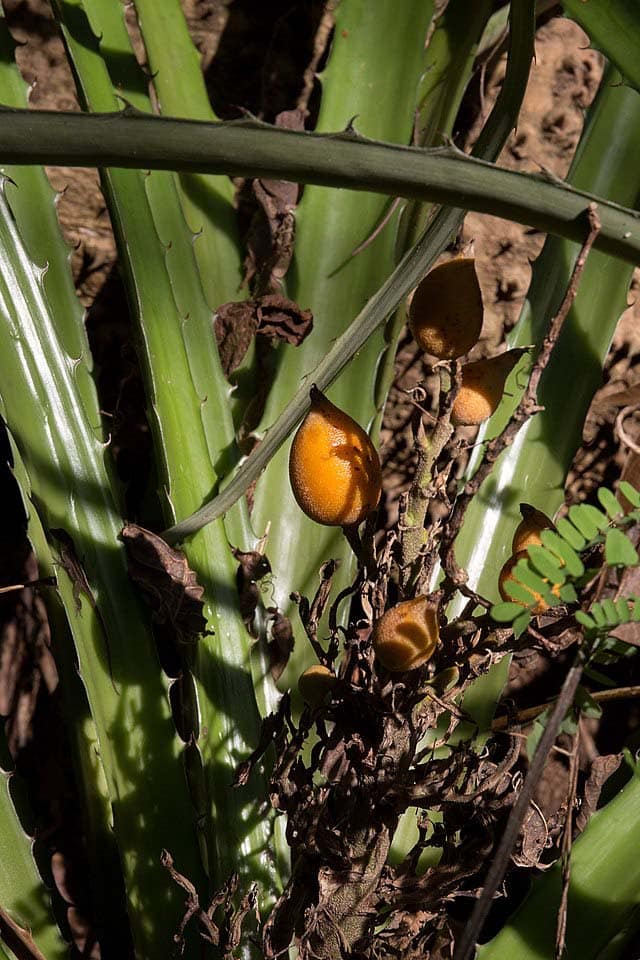
If you are searching for the strange Guatemalan fruit, pinuela is the name you should explore. This fruit has the same appearance as flowers. Pinuela stems in Central America, Mexico, South America, and the West Indies.
Guatemalans often eat raw pinuela to enjoy the authentic sweet taste. Furthermore, you can feel the tart aftertaste when enjoying this unique fruit. The seeds create a crunchy texture of it.
The fruit is guarded by a layer of hair, and you need to remove it before eating. To eat the pulp inside, you have to peel the rind. In Guatemala, you can catch this particular fruit in many yummy drinks.
Nutrients: It contains vitamin C, fiber, calcium, manganese, magnesium, and zinc.
Season: Its season is often in summer and autumn.
How to eat: Peel the rind of pinuela and eat its flesh inside.
9. Banana Passion Fruit
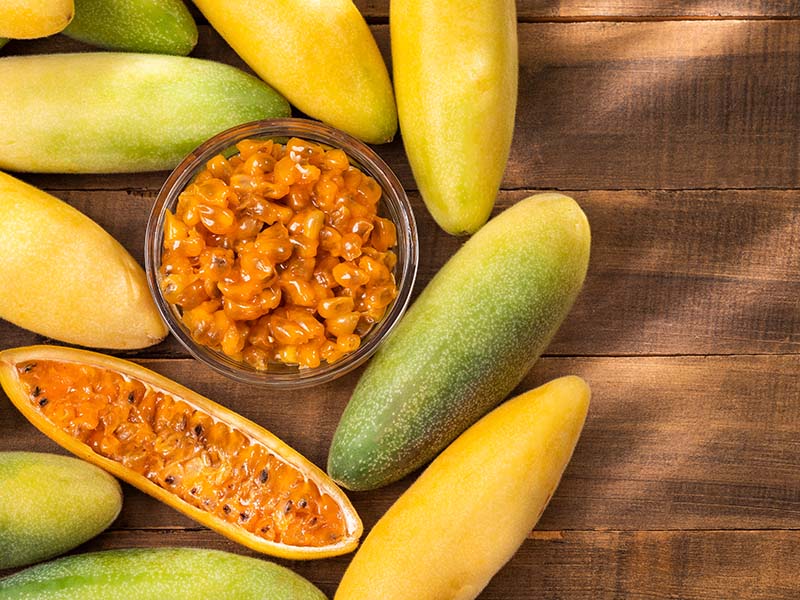
Banana passion fruit is a mixture of banana and passion fruit in shape and flavor. This excellent fruit is one of the most popular fruits in Guatemala. It has a similar form to a banana. But, the rind of it is green and harder than banana skin.
Its flesh resembles common passion fruit with a layer of orange pulp and numerous juicy seeds. You can confuse its taste with the flavor of strawberries or pineapple because they have many resemblances.
Besides Guatemala, this excellent fruit thrives well on the islands of Hawaii and Kauai. It is the loved food of many birds in the natural environment. In terms of cuisine, if you do not want to eat it raw, you can try salads, drinks, and many desserts made from this fruit.
Nutrients: It includes fiber, vitamin A, C, calcium, antioxidants, iron, and phosphorus.
Season: It is available all year round in the tropics.
How to eat: Dice the fruit into 2 halves and get the pulp and seeds with a spoon.
Check out the natural flavor of unique banana passion fruit right now.
10. Chico Zapote – Sapodilla
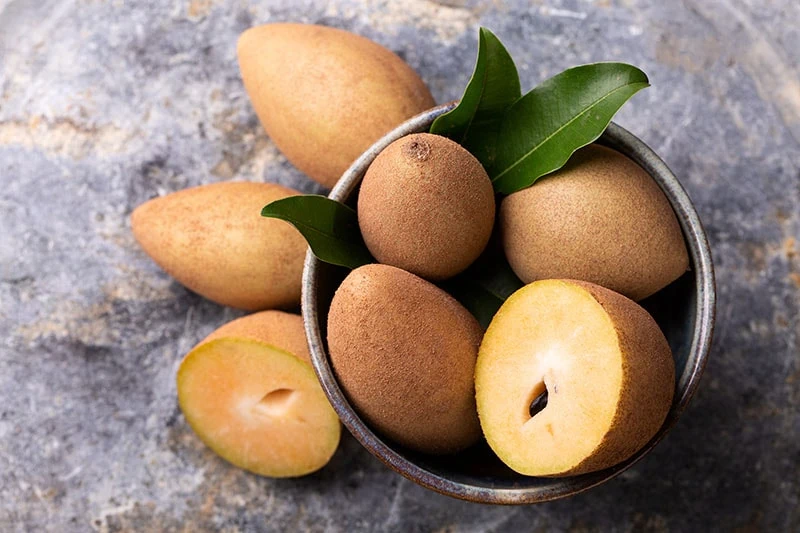
This fruit is also famous for the sapodilla name. Mexico, the Caribbean, and Central America are the motherland of this appealing fruit. In addition, chico zapote appears commonly in many Asian countries.
This berry taste is different from zapote mamey, although they are in the same Zapotialla family. Chico zapote’s slight yellow and earthy brown rind will captivate you instantly. In particular, the grainy texture will make this fruit more attractive.
There are many hard and black seeds inside each fruit. You will immerse yourself in the enchanting sweetness of this fruit. Furthermore, a hint of malty taste will make you remember this fruit forever.
When consuming the unripe chico zapote, the intensely astringent taste will dry out your mouth. Chico is common in local markets in Guatemala from November to March. It is fine to eat raw fruit or make jams, jellies, and other treats.
Nutrients: High in calories, carbs, vitamin C, calcium, magnesium, potassium, and sodium.
Season: Its season extends from November to March in Guatemala.
How to eat: Let’s cut chico zapote in half, remove the seeds, and eat the flesh from the skin.
Do Not Neglect These Amazing Guatemalan Fruits With A Single Seed
Guatemalan fruits are diverse, so you can choose these fruits in this part instead. This section contains delicious fruits that have only one seed in the middle.
11. Nance
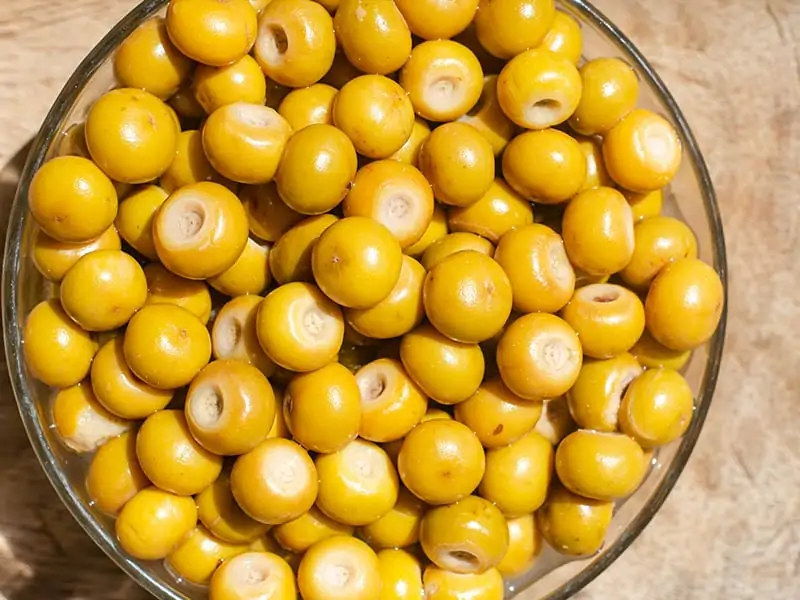
Nance is a typical fruit of Guatemala. You can see this fruit commonly in the wild. Besides Guatemala, it is simple to come across nance in other regions in South America and Central America. This fruit will thrive well in tropical and subtropical areas.
Also, nance is an iconic Jamaican fruit, and it is also known as hog berry in this country. It often appears round and yellow skin. You cannot resist the charming and appealing sweet flavor. Its taste resembles the mixture of pear, banana, and lychee.
You can find this fruit easily, thanks to its intense and powerful fragrance. In terms of texture, you can imagine a jarred kalamata olive since they have many similarities. Guatemalans often consume it fresh or mix it in many foods.
Pesada de Nance is a delicious Guatemalan dessert made from nance, sugar, and flour. Also, it is a common element in candy (Dulce de Nance), ice cream, juice, sorbets, and other desserts.
Nutrients: A source of calories, fiber, carbs, vitamin C, K, calcium, potassium, and magnesium.
Season: You can find it easily between the late summer and early autumn.
How to eat: It is better to peel the skin of this fruit before eating. Consume the flesh around the stone.
12. Rambutan
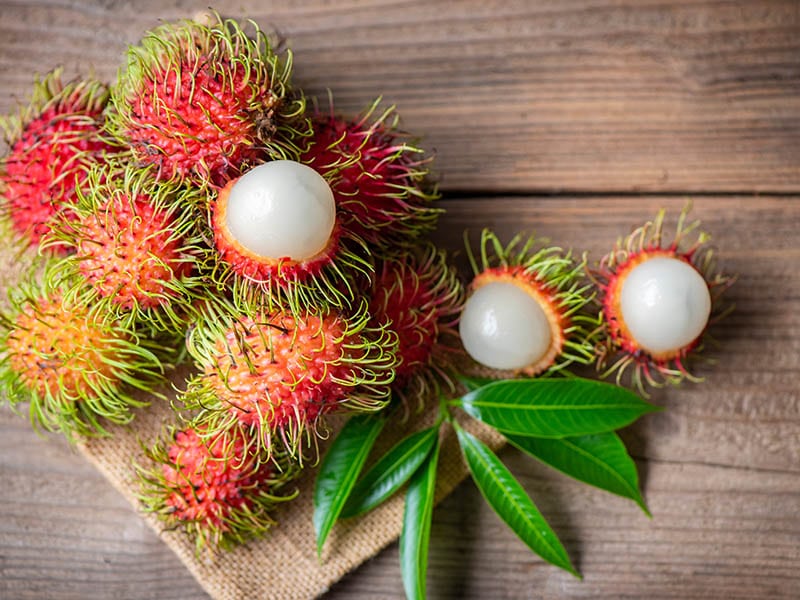
Rambutan belongs to the Sapindaceae family and originates in Southeast Asia. Nowadays, its cultivation commonly takes place in Guatemala and many tropical regions. This fruit has the same structure as longan, lychee, and mamoncillo.
It contains a small stone in the middle, and the jelly-like flesh will cover the pit. The exceptional fruit will be protected by leathery skin. You can acknowledge this fruit because it has a distinctive reddish color.
Furthermore, there are countless pliable spines surrounding its skin. Its appearance will make you think of a head with many hairs. You will feel the sweetness and a slight acidity when eating the whitish or pink flesh of the rambutan.
Its name is taken from the “rambut” word. In Malay, this word means “hair”. People have relied on the appearance of this fruit to name it. This yummy fruit is incredible when you consume it raw. In addition, you can try smoothies, cocktails, and savory dishes made from it.
Nutrients: Plenty of calories, carbs, vitamin C, potassium, and phosphorus.
Season: This fruit is often ripe from May to November in Guatemala.
How to eat: It is easy to peel the skin of a rambutan with your hand. Eat the delicious flesh around the seed.
You should rely on the tutorials to eat rambutan properly.
13. Hog Plum – Jocote
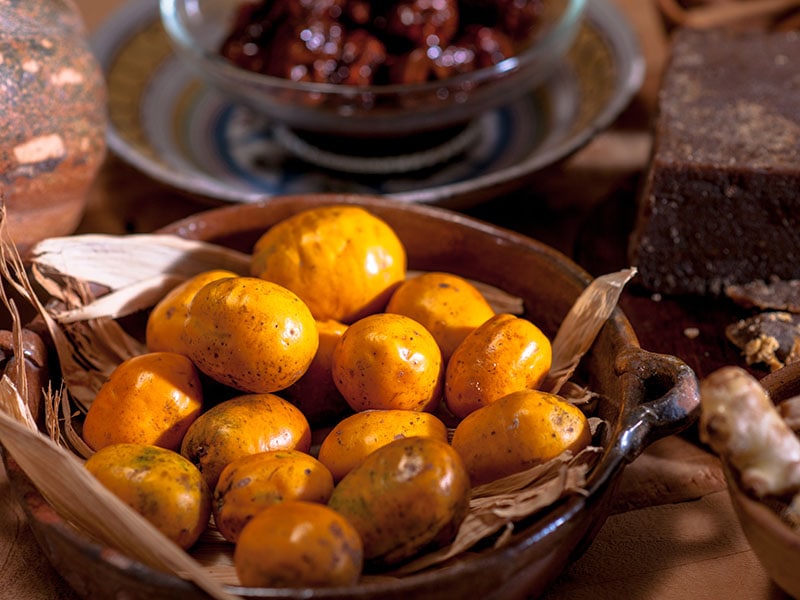
It would be a shortcoming not to mention jocote or hog plum in this Guatemalan fruits list. This incredible fresh treat has its origin in the Americas. Today, you can taste it easily in Guatemala, Brazil, and the Caribbean islands.
Its name originates from the “xocotl” word, which means “sour fruit” in Nahuatl. In many other regions, it is called red mombin, siriguela, or purple mombin. It is a small fruit with a perfectly round shape.
It is acceptable to consume the waxy and red skin or this delicious fruit. When mature, the flesh will turn yellow and get wonderful sweetness. Indeed, you have to get rid of the hard and large stone in the middle of the fruit while eating jocote.
After trying this fruit, you will feel the slightly sour aftertaste. This will leave a deep impression on your mind. If you want to eat raw fruit, you should dip it in salt. Jocotes en Miel (jocote soaked in syrup) is a famous recipe made from jocote in Guatemalan cuisine.
If you travel to Guatemala on Christmas, you will have the chance to try the perfect flavor of the traditional Jocotes en Dulce recipe. This is the combination of jocote, allspice, panela, and water.
Nutrients: Rich in protein, carbs, iron, carotene, vitamin B1, B2, C, calcium, and ascorbic acid.
Season: September to October is the perfect moment for picking this fruit in this nation.
How to eat: Let’s peel the skin of hog plum before enjoying. It has a single seed in the center, and remember to discard the pit while consuming.
14. Loquat – Nispero
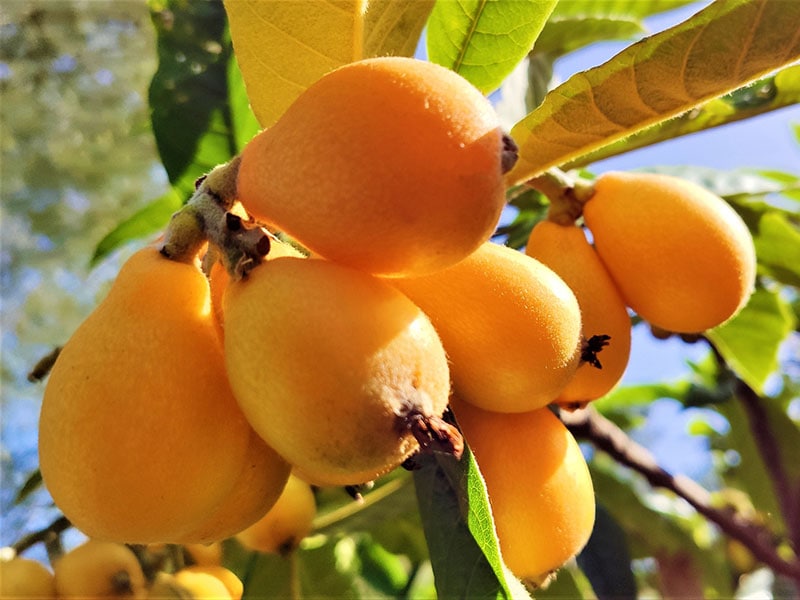
Guatemalans love the taste of loquat or nispero in many delicious recipes. To express their love for this fruit, Guatemalans held the Festival de Nispero annually at San Juan del Obispo. This delightful fruit belongs to the Rosaceae family.
Initially, loquat originated in China more than a thousand years ago. Chinese started using this fruit in the Tang Dynasty. And Chinese immigrants brought this fruit to Guatemala, Hawaii, California, and American countries.
There are 3 common shapes of loquat, including round, oval, and pear-shaped. This fruit looks glossy in the yellow, red, or orange skin with a smooth texture. You can see its flesh in yellow, white, or orange.
Many different types of loquat have been found worldwide, and they can be sweet, sour, or subacid, depending on the variety. Almost all loquats have a distinctive tangy flavor. Many small fruits are attached to a bunch.
In Guatemala, people prefer consuming raw loquat or making salads from this fruit. Sometimes, you can find the taste of loquat in jams, chutneys, pies, and other desserts.
Nutrients: High in calories, carbs, protein, fiber, vitamin B6, A, folate, and magnesium.
Season: Its season runs from October to December in Guatemala.
How to eat: There are 2 ways to enjoy this fruit. First, you will remove its skin and consume around the seed. Second, let’s dice it in half, discard the pit, and enjoy the flesh from the skin.
15. Zapote Mamey
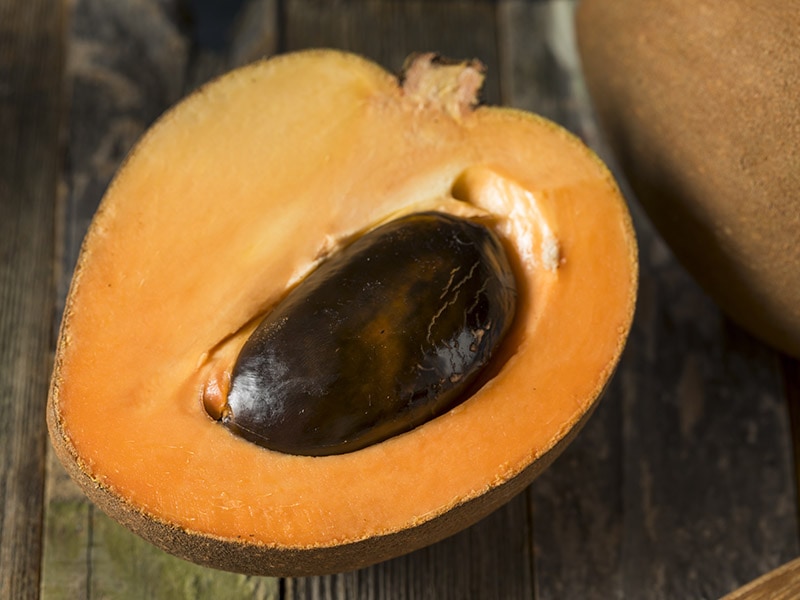
Zapote mamey is a national Cuban fruit, but it is also well-known in Guatemala and other regions. This yummy fruit is native to Central America and Mexico. Now, people cultivate zapote mamey in the Caribbean and Latin American nations.
Besides this common name, it is called mamey colorado, zapote rojo, and zapote colorado in many other areas. This fruit is a berry with an oval shape. When you touch the skin of mamey, its texture is similar to sandpaper.
The characteristic brown skin will help you realize this fruit quickly. When ripe, its flesh is red, orange, or pink. The creamy and soft consistency of mamey will be suitable for cuisine. The flavor resembles the combination of peach, honey, cantaloupe, and almond.
The sweet taste of mamey will enhance the flavor of ice cream, smoothies, jams, and pop. In particular, a hint of tartness will appear in your mouth when tasting this fruit. Primarily, you can fry this fruit to consume as fried bacon.
Nutrients: Rich in vitamin B6, C, niacin, manganese, potassium, fiber, and riboflavin.
Season: November to March is a suitable time for collecting this fruit in Guatemala.
How to eat: Slice the fruit into 2 parts, remove the single seed and take the flesh with a spoon.
Let’s check this introduction to have a closer look at zapote mamey.
16. Cashew – Jocote de Maranon
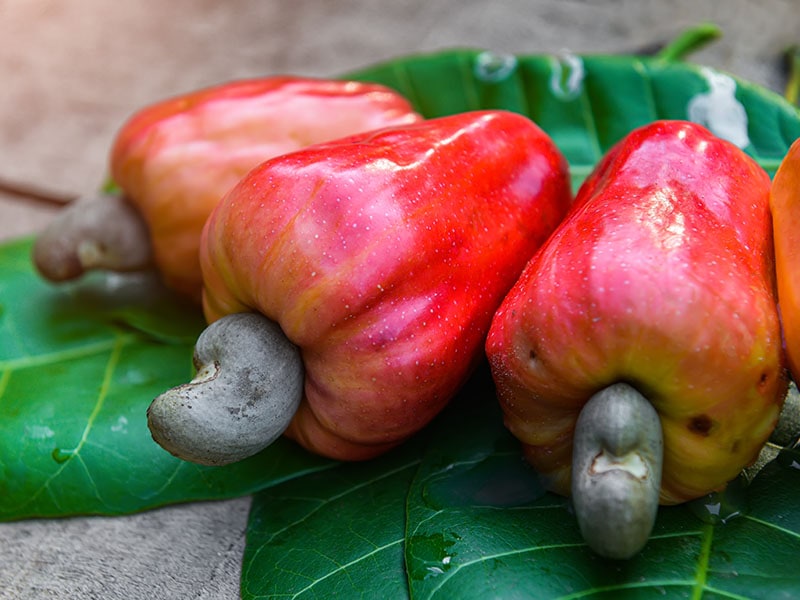
It is a pity not to mention Jocote de Maranon or cashew in this impressive list. Also, cashew is an authentic Brazilian fruit, and you can find it easily in the Sao Paulo market. This famous fruit originates in the Caribbean, Central America, and South America.
The seeds of cashew are one of the favorite snacks of Guatemalans and people worldwide. It looks like a pear because of its resemblance in shape. You can recognize this fruit because it has a large pit on the top outside.
Typically, the cashew apple will have an eye-catching bright yellow or red and charming fragrance. You can feel the sweet and sour taste when eating this fruit. Significantly, the astringent flavor is an indispensable part of each cashew apple.
Its seed is a perfect food in many cuisines. Besides consuming it as a nut after toasting, you can try butter and cheese made from this ingredient. Guatemalans also use this fruit to make outstanding juices or vinegar.
Nutrients: A source of calories, carbs, protein, vitamin K, magnesium, potassium, and phosphorus.
Season: Available all year round in tropical regions.
How to eat: After removing the seed, you can toast it to eat as a nut. To use the cashew apple, you need to peel its skin and eat the flesh.
17. Mango
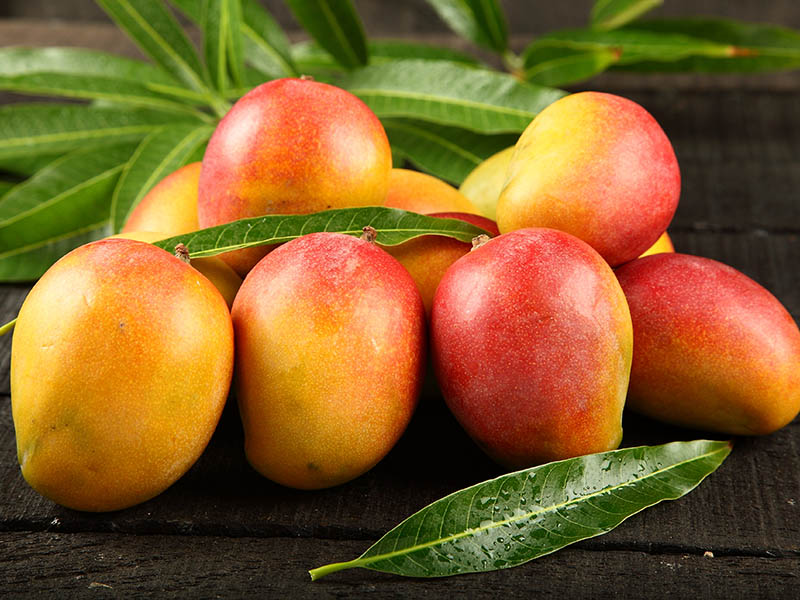
Mango is an international fruit, and it is one of the unique desserts of Guatemalans after each meal. This stone fruit was born in India, Myanmar, and Bangladesh in ancient times. It was brought to Brazil from Africa in the 16th century and appeared in the Caribbean in the 18th century.
Mango is a versatile fruit used widely in many delicious dishes, from sweet to savory. The crunchy texture of unripe mango is an excellent element for many salads and tasty dishes. Fresh mango or smoothies, cake, or ice cream are yummy desserts with mango.
Mango is diverse in size, shape, and color based on the various species of mango. It can be yellow or green. Occasionally, you can see orange-skinned mangoes. When ripe, its flesh will turn from green to yellow.
Mango has a delicate and attractive flavor with the perfect sweetness. Moreover, you should not miss the slight sourness of this fruit because it will stimulate your taste buds. To eat raw unripe mango, you should dip it with salt to reduce the tartness.
Nutrients: Rich in calories, carbs, vitamin C, calcium, copper, and potassium.
Season: April to June is the primary season of mango in Guatemala.
How to eat: To eat mango, you can peel its skin and consume the flesh around the seed. Or, it is good to slice around the pit and eat the flesh from the skin.
18. Mamoncillo
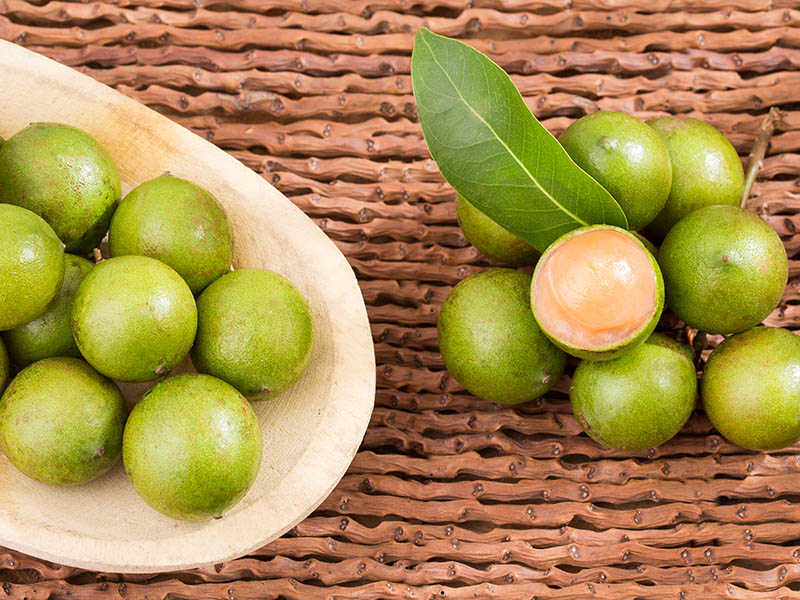
Mamoncillo or guinep is the renowned fruit of the Caribbean, South, and Central America. This excellent fruit is a national Puerto Rican fruit because there is a National Genip Fruit Festival held annually in this country.
It is a small fruit with a brittle and green skin. It belongs to the drupe category, so you will see a white stone in the middle of the juicy and orange pulp. It tastes like wine when ripe, and you will love its bittersweet taste on the first try.
There are many methods to prepare mamoncillo. You can see it in a fresh form commonly in Guatemala. Besides, you can buy canned mamoncillo to eat. To eat its seeds, you need to toast them before.
Nutrients: Calories, carbs, vitamin C, fiber, calcium, and potassium.
Season: You can see this fruit abundantly from July to October in Central American countries.
How to eat: Bite the skin to reach the pulp. Put the pulp in your mouth and suck the flesh from the seed.
Gain the methods to consume exotic mamoncillo.
What Is Your Favorite Guatemalan Fruit?
Did you have enough fruits for dessert menus for the party? If not, you can choose the fruits you love from this great list. I guarantee their flavor will satisfy the palate of you and your diners.
Do not forget to share your experiences after reading this article in the comment section. Also, please spread this helpful information to those around you by sharing this article. Thanks a lot!
